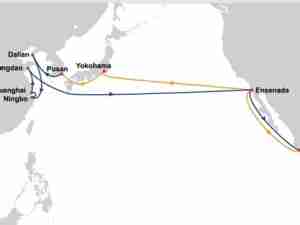Securing funding for the second phase of the Napoleon Avenue Container Terminal topped a legislative agenda adopted by the Board of Commissioners of the Port of New Orleans.

Board members unanimously approved a resolution detailing six priorities for the upcoming special session of the Louisiana Legislature, which Gov. Bobby Jindal plans to call prior to the Regular Session convening on March 31.
Port officials are seeking a state commitment of $250 million for construction of the second phase of the Napoleon Avenue Container Terminal. The expansion would increase the terminal's capacity by three berths and almost 200,000 teus, which would enable the Port to attract additional container carriers and expand the business of existing operators, such as Mediterranean Shipping Company - the world's second largest container carrier.
'MSC is currently one of our largest customers and this commitment could create more than 2,000 new jobs in the region,' said Gary LaGrange, President and CEO of the Port of New Orleans. 'We are very excited about their level of interest to invest and grow their business in New Orleans.'
MSC currently serves the Port of New Orleans with three container vessels per week.
Another top priority for the Port is securing $6 million through the Port Priority program for improvements to the France Road Container Terminal to support the development of Latin American trade through the vessel services provided by Miami-based Seaboard Marine Ltd. Seaboard currently provides three ships in twice-weekly direct service from New Orleans to Latin American ports. Seaboard executives signed a six-year lease for France Road Terminal Berth 1 in August of 2007 with three renewal options for additional six-year terms, which could keep Seaboard operating at the terminal for 24 years. The France Road Terminal has been shuttered since Hurricane Katrina, primarily due to the loss of deep-draft navigation on the Mississippi River-Gulf Outlet.
Seaboard, which operates a fleet of 40 ships calling on 25 countries, have sufficient vessels to successfully transit the Inner Harbor Navigation Canal Lock, allowing access to France Road. Seaboard officials plan to use the terminal as a platform to grow and develop their operations in New Orleans.
'This project puts a major Port facility back into commerce and is vital to growing trade with Latin American countries,' LaGrange said.
Other priorities include a $14 million Capital Outlay Request for cruise terminal boarding structures at the Julia Street Cruise Terminal and Erato Street Cruise Terminal, which are essential in attracting the next generation of cruise vessels to the Port.
Officials also hope to aid Louisiana importers and exporters and provide an incentive to use Louisiana ports by seeking the Legislature's approval of a tax credit for Louisiana shippers for importing and exporting cargo through state ports. The credit is based on increases in exports and imports, so to not impose a financial liability on the state for existing business already in place. The credit could lead to substantial increases in economic activity. For example, a study conducted by James A. Richardson, an economics professor at Louisiana State University, determined a 10% switch in imports from neighboring ports to Louisiana ports would result in an additional $1 billion in overall business activity, with personal earnings of $222 million and new jobs totaling 6,118. That activity would result in new state tax collections totaling $14.7 million and local tax collections totaling $9.8 million.
Other priorities include:
- The approval of a bill to forgive bond debt loans to local governments, which were provided not only to the Port, but to municipalities, parishes and other local government entities to aid in their post-Katrina recovery.
- Support






